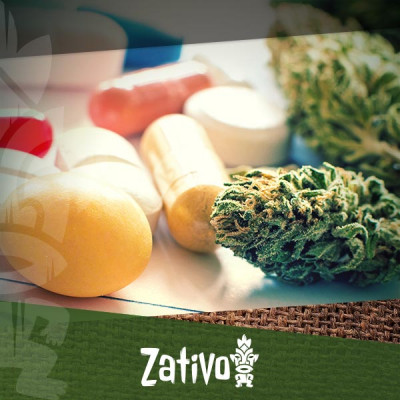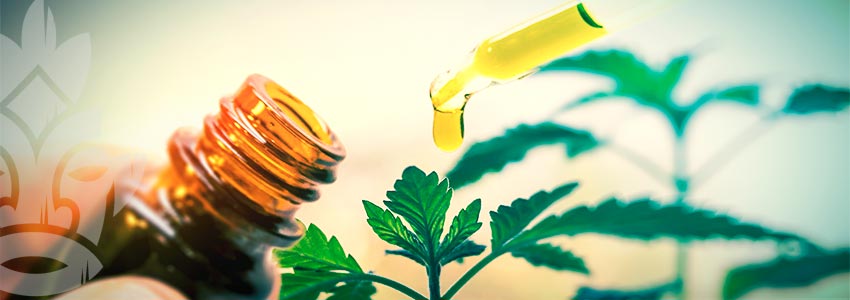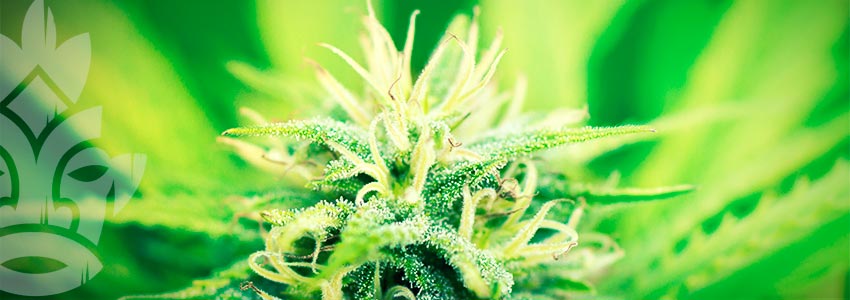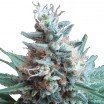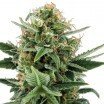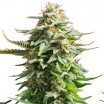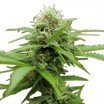Don't have an account?
Register NowYou have to add to cart at least 5 bottles or any program to make checkout.
- BlogIs Cannabis The Answer To Antibiotic Resistance?
Is Cannabis The Answer To Antibiotic Resistance?
Published: October 31st, 2019
Categories:
Cannabis Info • Medical Cannabis
Antibiotics are vital to protect the body from potentially lethal bacterial infections. However, antibiotic resistance threatens to render these substances ineffective. New drugs may be able to resolve this issue, some of which derive from the cannabis plant.

WHAT ARE ANTIBIOTICS?
Antibiotics are substances that inhibit the growth of or destroy microorganisms. They have been used for potentially thousands of years to kill and defend against bacterial infections that could have lethal consequences if left unchecked. Modern antibiotics are chemical in origin, however, these substances are also synthesised in nature by bacteria and fungi. Antibiotics were first obtained by exposing certain lifeforms to other microorganisms, a situation that caused them the exude antibiotics to deter bacteria.
This discovery was made by Sir Alexander Fleming, a Scottish biologist who found that penicillin, a type of fungi, was capable of producing metabolites that deterred bacteria after contaminating Petri dishes. This discovery led to the application of penicillin, which has saved countless lives. Although Fleming is viewed as one of the forefathers of antibiotics, it’s believed that cultures as far back as the ancient Egyptians were harnessing fungi to combat bacterial infections.
There are 6 major types of antibiotics: penicillins, cephalosporins, aminoglycosides, tetracyclines, macrolides, and fluoroquinolones. These substances have been involved in saving a huge number of lives by wiping out potentially deadly bacterial infections. However, just like all other organisms, bacteria are capable of adapting to stressors. This adaptation has led to the rise of antibiotic-resistant bacteria, resulting in a race between the development of new chemical antibiotics and bacterial adaptation to them.
WHAT IS ANTIBIOTIC RESISTANCE?
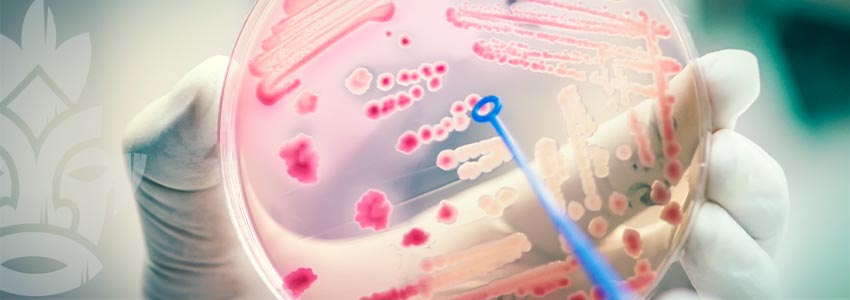
Antibiotics have played a fundamental role in extending life span and tackling infectious disease in recent times. Before the 20th century, bacterial infection was a common cause of death, and the average life expectancy was 47. However, since the widespread application of antibiotics, the main leading cause of death in Western countries like the United States has shifted to chronic diseases such as heart disease, and the average life expectancy has risen to 78.8 years.
This massive positive change was only made possible because the antibiotic substances being used were highly effective against the bacterial pathogens being targeted. It hasn’t taken long for these pathogens to develop a considerable resistance to these once-successful antibiotics. Resistance is achieved via genetic mutation; examples of bacterial species that have developed resistance to antibiotics include penicillin-resistant Streptococcus pneumonia (PRSP), multidrug-resistant Gram-negative bacilli (MDRGNB), methicillin-resistant Staphylococcus aureus (MRSA), and vancomycin-resistant Enterococci (VRE).
These newly adapted bacteria can be very difficult to combat and often require extremely high doses of antibiotics or other drugs, which can have severe side effects.
Antibiotic resistance is now being viewed as a worldwide health threat. Data from the Centers for Disease Control and Prevention (CDC) illustrates the severity of this crisis. One report states that antibiotic resistance is one of the largest health threats of the modern era, and that 2 million people in the US experience an antibiotic-resistant infection each year, resulting in approximately 23,000 deaths.
IS CANNABIS AN ALTERNATIVE ANTIBIOTIC?

Efforts being employed by the CDC to combat antibiotic resistance include researching the prevention of antibiotic-resistant bacteria in healthcare settings and the environment, and how disruption in the human microbiome can put people at risk of infection. Other measures being implemented are ceasing the unnecessary prescription of antibiotics and the development of new antibiotics.
Cannabis may be an unlikely yet effective source of new antibiotic compounds. Cannabis is a chemically diverse plant that produces hundreds of different molecules, many of which have demonstrated medicinal potential in scientific studies. The two most interesting chemical classes produced by the plant are cannabinoids (molecules that work by interfacing with the human body’s endocannabinoid system) and terpenes (volatile aromatic hydrocarbons).
Of the cannabinoids, THC (tetrahydrocannabinol) and CBD (cannabidiol) are the two most abundant in the plant, and the most well studied. CBD is a non-psychotropic molecule that is becoming increasingly well known for its anti-inflammatory, anticonvulsant, antioxidant, antitumour, and neuroprotective actions, among others.
Recent research presented at the annual meeting of the American Society for Microbiology shows evidence of CBD’s antibiotic action in animals and in vitro. The cannabinoid was shown to be effective against certain forms of Gram-positive bacteria (bacteria with a thick cell wall composed of peptidoglycan) such as Staphylococcus aureus and Streptococcus pneumoniae.
The research was funded by the company Botanix Pharmaceuticals, and their synthetic version of CBD was used in the study. It was found that the cannabinoid was capable of killing Gram-positive bacteria that were resistant to some forms of antibiotics. What’s more, the cannabinoid did not become less effective over time, suggesting no resistance to the molecule was formed by the bacteria. However, CBD showed no effectiveness against Gram-negative bacteria, a form that includes E. coli.
Researchers involved in the study state that these findings show great promise for CBD as a future antibiotic drug, especially considering that its proven anti-inflammatory action may help to reduce inflammation involved in some bacterial infections.
The research also demonstrated that CBD was able to kill bacteria faster than conventional antibiotics. The molecule killed bacteria within 3 hours, whereas Vancomycin took 6–8 hours to accomplish this task.
CBD was able to produce these results by disrupting the biofilm of bacteria, a gooey membrane that makes bacterial cells harder to kill.
CBD ISN’T THE ONLY CANNABIS-DERIVED CHEMICAL THAT CAN KILL BACTERIA
Although CBD is showing great promise at killing bacteria, it’s by no means the only chemical in cannabis capable of this feat. Cannabinoids like THC, CBC, CBG, and CBN have also been shown to display potent activity against methicillin-resistant Staphylococcus aureus (MRSA).
Terpenes, the volatile molecules responsible for the distinct smells and tastes of cannabis, have also been shown to be effective against some forms of bacteria. Terpenes from essential oils such as linalool and pinene, which are also synthesised in cannabis, have displayed antimicrobial activity against bacteria such as Staphylococcus aureus.
There are over 100 different cannabinoids and many different terpenes produced by the cannabis plant. Although research is early, future studies involving other compounds are certainly due.
WHICH CANNABIS STRAINS MIGHT BE BEST?
The research is very early, and it’s too soon to be considering how to defend yourself against bacteria using weed at home. But the research does show that both CBD and THC are quite effective against some forms of bacteria. For this reason, it might be a good passive option to keep your immune system in check by consuming strains high in both THC and CBD. Check a couple out below:
Bubblegum XL is a slightly sativa-dominant strain that was created from parent strains Power Plant and Santa Maria. This combination culminated in a high-THC, CBD-rich cultivar with a complex and delectable terpene profile. Expect sweet and earthy notes, and a smooth-cruising high with an uplifting touch.
Jorge’s Diamond 1 is a stoning, india-dominant hybrid that produces large and thick flowers loaded with resin. The THC level of these buds hovers at 16–18%, and the CBD level reaches a medium value. These flowers are also relatively high in CBN and THCV.
YOU MIGHT ALSO LIKE
Related blog posts
- » Use This Checklist Before The First Time You Smoke Weed
- » How To Check If Your CBD Oil Is High-Quality
- » What Is Marijuana Withdrawal And How To Deal With Symptoms
- » How To Make Your Own Cannabis Brownies & Which Strains To Use
- » The 10 Most Fun Ways To Smoke Weed
- » Too High? Here's How To Chill Out And Sober Up

